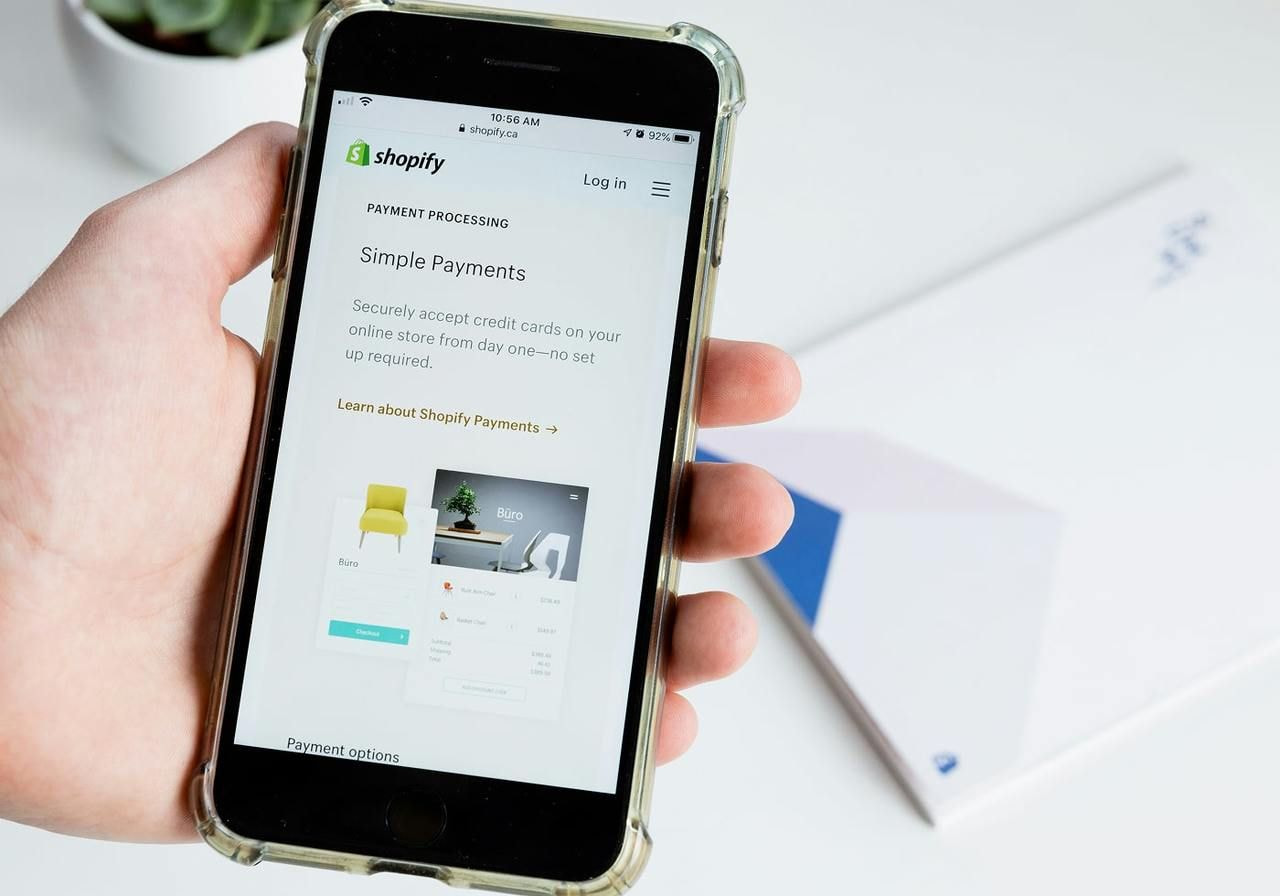Table of contents
Want to start an online greeting card business without managing inventory or shipping? With Print on Demand and a growing interest in personalized greeting cards, it’s easier than ever. This guide shows you how to build your card business – from choosing a niche to creating your online store and making your first sale. Let’s get started!
Key takeaways
Launch a greeting card business with no upfront costs using print-on-demand services.
Stand out by picking a niche market (e.g., remote workers or dark humor fans).
Use online marketplaces like Etsy or Amazon to uncover demand and spot gaps in the greeting card industry.
Design greeting cards in minutes with tools like Printful’s Design Maker or digitize handmade cards.
Start selling fast using ecommerce platforms, online marketplaces, or Printful’s Quick Stores – no coding needed.
Market your greeting cards online using professional photos and keyword-optimized product descriptions.
Yes, a greeting card business can certainly be profitable. For one, the market’s growing: The global greeting card industry was valued at $20.79B in 2024 and will reach $27.23B by 2030. That growth signals steady demand and more opportunities for new brands to enter the space.
At the same time, personalization has made it possible to move away from mass-produced cards. Sellers can now offer custom, niche-specific greeting cards without handling inventory or upfront costs. This shift lets small creators compete with big-name brands.
With the right designs, marketing, and pricing, you too can turn a creative project into a profitable business.


Build your own greeting card business in 8 steps
Let’s get down to business – in this section, we’ll walk you through everything you need to launch a successful greeting card company.
1. Pick a niche market for your online business

Trying to sell to everyone usually backfires. If you’re aiming for broad appeal, your cards can end up feeling generic. Plus, you’ll face more competition, as thousands of greeting card companies are fighting for your potential customers’ attention.
To stand out, you need to be specific. Find a niche – a group of people united by shared interests, experiences, values, needs, life stages, or attitudes.
Think college students with finals humor, adult siblings who roast each other, or birthday cards for remote workers. Greeting cards that speak to real situations are relatable – mass-produced cards usually lack this personal touch.
Let’s brainstorm how to find your ideal niche.
Valuable read: 17 Print-on-demand niches to watch in 2025
Focus on your passions and interests
The best niche is one you already understand. When you care about the topic and understand the audience, it’s easy to create designs that feel real. It’ll also help you stay motivated in the long term.
Analyze competitors and trends
Once you’ve narrowed down a niche, next up is market research – exploring what cards are already sold online, and how you could do it better.
Start with a quick competitor analysis. Search for greeting cards that fit your interests on Etsy, Amazon, and Pinterest. What card themes show up first? Which listings have the most reviews? Pay attention to card styles, pricing, and how sellers describe their products.
Look for gaps in style, tone, and messaging. If every card for new parents is soft pastels and sweet messages, maybe there’s room for a “welcome to zero sleep” card covered in toddler scribbles.
Here are some tools to make the digging easier:
Etsy or Amazon search bar: Type in a few keywords like “funny breakup card” or “vegan birthday card.” Let the autocomplete show you what people are searching for.
Pro tip: Read reviews. Buyers will tell you what they love and what’s missing. Look for repeated complaints about quality, design, or unmet expectations. That’s your chance to solve a real problem and stand out.
TikTok and Instagram: Check hashtags like #greetingcards, #greetingcarddesign, or something more specific like #watercolorcards or #sarcasticcards. Check out #smallbusiness to see what’s going viral.
Once you’ve explored competitors, look at broader patterns – like recurring seasonal demand and long-term interest in different card types.
Google Trends: Compare card types like “birthday cards” vs. “thank you cards” to see what gets steady searches and when seasonal spikes happen. Filter by region and timeframe to fine-tune your insights.
Pinterest Trends: Use to spot industry trends and styles people seek. Filter the results by time, audience, and interests to find what’s growing, trending this month, or repeats seasonally, and use it to plan ahead. You’ll need a Pinterest account to access the trend report.
Valuable read: Useful market research tools for startups and established businesses
Finalize your target audience
Ok, so you’ve gathered your intel on trends and have a niche in mind. Before you commit, define your ideal customers – who they’re buying for, what kind of message or tone they connect with, where they shop, and how much they spend.
Here’s how to pressure-test your idea:
-
Scroll through reviews on successful shops. See if you recognize a pattern in what buyers want, joke about, or wish existed.
-
Click through commenters on social posts. Do they tag friends, react with specific comments, or follow related brands? That tells you they’re engaged – and likely to buy.
-
Search card-related subreddits or TikTok comments. If people are asking, “why doesn’t this exist?” or joking, “this is too real,” you’re onto something.
When your niche lines up with real people and you can picture who’s buying and why, you’ll design greeting cards for your ideal customer, not “everyone.”
2. Plan and register your new greeting card business

Before you start selling, ensure your online business is set up for success – legally, financially, and professionally.
Write a simple business plan
Your business plan doesn’t need to be a 50-page document. But drafting one will help align your goals, budget, and strategy as your greeting card business grows.
Here’s what to include in your greeting card business plan:
-
Overview: Briefly explain what your card business is and its target audience.
-
Business structure: Note whether you’re a sole proprietor or forming an LLC. Add your mission (why you’re doing this), vision (what success looks like), and any long-term business goals.
-
Product and pricing: Describe the types of cards you’ll sell (themes, tone, formats), target audience, and how your pricing strategies align with your costs and profit margins.
-
Tools and operations: List your production method (e.g., Print on Demand) and tools you’ll use – like design software, ecommerce platforms, and fulfillment services.
-
Market and competitors: Summarize what you learned from your market research – who else is out there and what makes your greeting cards stand out.
-
Marketing plan: Outline how you’ll promote your shop. Include social channels, email marketing, seasonal launches, and any paid marketing you’ll test.
-
Budget and projections: Estimate your startup costs, expected monthly expenses, and income goals. You don’t need perfect numbers – just a realistic cash flow forecast.
-
Risks and backup plans: Consider the biggest risks (like slow sales, shipping delays, or creative burnout), and how you’d handle them, e.g., adjusting pricing, outsourcing design, or shifting focus.
Register your small greeting card business
Make it official – choose a business structure and register your business with local authorities. Most sellers in the US pick a limited liability company (LLC) to separate personal and business finances.
Registration is usually quick and affordable, but it’s key for opening a business bank account, collecting sales tax, or protecting your brand name. Requirements vary by country and state, so check what applies to you. See our guides on how to start a business in the US and Printful taxes to learn more.
Develop your brand identity
Your designs get people in the door, but your branding makes them stay. More than just a logo, it’s how your business looks, sounds, and connects with buyers. Here’s what you’ll need to build a strong brand identity and keep it consistent across various marketing materials.
-
Business name: Choose something that reflects your niche, tone, and personality and is easy to remember.
-
Logo: Keep it simple and versatile. It should look good on your store, product mockups, and social media.
-
Colors and fonts: Stick to 2-3 of each, and use them consistently across your designs, website, and marketing.
-
Tone of voice: Decide how you’ll “speak” to your customers – whether it’s funny, sincere, bold, or minimal. Apply it to product titles, descriptions, and social captions.
-
Visual consistency: Use similar styling in your mockups, photography, and packaging, so everything feels unified.
A clear and consistent brand identity makes customers trust you, remember you, and return for more.
3. Find a reliable print-on-demand partner

You’ve got your idea and target market in mind. Now you need to decide how your greeting cards will be produced.
The easiest and most cost-effective option is Print on Demand (POD). Each card is printed and shipped only after a customer orders, so there’s no need to invest your own money in bulk orders, manage inventory, or make trips to the post office.
Here are the key factors to consider when looking for reliable print-on-demand services:
-
Print quality: Your card design is only as good as the print – look for sharp colors, clean lines, and premium paper. Order samples before you commit.
-
Fulfillment speed: Greeting cards are often time-sensitive. Make sure production and shipping times are reliable, especially around holidays.
-
Pricing and profit margins: Check base prices, shipping costs, and room for profit.
-
Ecommerce integrations: A good POD partner should easily connect with platforms like Etsy, Shopify, or your own website, so orders flow smoothly.
-
Reliable support: If an order goes wrong, you need responsive customer support that resolves issues quickly – crucial for business success.
-
Design tools: If you don’t use an external design software, choose a supplier with built-in digital tools for designing cards and creating mockups.
With built-in design tools, fast, reliable order fulfillment, and no upfront costs, Printful makes it easy to launch and grow your greeting card business, even if you’re a beginner.
If you want more greeting card options, Printify is another great supplier to explore. It connects you with a global network of print providers, so you can compare products, prices, and shipping times to find the best fit for your greeting card business.
4. Pick your greeting cards to sell

Before you start designing, decide what kind of cards you’ll sell. With Print on Demand, you don’t need to commit to a single type – test different formats, sizes, and finishes to see which greeting cards sell best.
Decide on a card type
Single-folded cards are the most common and versatile. They work for birthdays, holidays, thank-yous, and everyday moments. You can also offer multipacks (3 or 5 cards) as themed sets or stationery bundles.
Next, consider the finish:
-
Glossy cards have a smooth, reflective surface that makes colors pop – it’s best for bold illustrations or photo-based designs.
-
Matte cards have a softer, non-glare look and are better suited for muted colors, minimal designs, or hand-written messages.
Many businesses and customers prioritize sustainability. If that aligns with your brand, look for providers that offer recycled paper options.
Consider various printing methods
Depending on how you produce your cards, you’ll come across a few different printing methods:
-
Digital printing: Best for small runs, full-color designs, and fast turnaround. Great for illustrations, hand lettering, and photography.
-
Offset printing: Ideal for large-volume orders. While it requires more setup, it delivers exceptional color consistency and professional results.
-
Letterpress and foil stamping: Add texture or metallic elements. Often used to leave a lasting impression on premium cards like wedding invitations or luxury stationery.
If you use a print-on-demand service, your greeting cards will most likely be digitally printed. This method keeps startup costs low while delivering sharp, full-color results – perfect for beginner sellers.
Choose your card size
Most greeting cards fall into two sizes:
-
4″ × 6″ (101 × 152 mm): compact, ideal for quick custom messages or simple designs
-
5″ × 7″ (127 × 178 mm): the classic greeting card size, with more room for text or creative designs
Printful’s greeting cards also come in a larger 5.83″ × 8.27″ (148 × 210 mm) size.
5. Create designs for your personalized greeting cards
Once you’ve picked the card type and size, it’s time to design. There are a few different ways to create greeting cards depending on your skills and tools.
-
Use a design software: Adobe Illustrator, Procreate, and Canva are popular tools for creating cards digitally. Canva is especially beginner-friendly, while Illustrator gives you more advanced control if you already have design skills.
-
Digitize handmade cards: Prefer working with physical materials? Paint, draw, or hand-letter your card, then scan or photograph it. Clean up the file in Photoshop or Canva to prepare it for printing.
-
Design on your POD platform: If you want a faster route, easy-to-use tools like Printful’s Design Maker let you design cards directly on the platform using built-in fonts and graphics – no extra software needed.
-
Hire a professional: If design isn’t your thing, hire a freelancer. You can also buy editable templates from platforms like Creative Market and customize them with your text and colors.
6. Decide where to sell and set up an online store

Next, choose the sales channels for your greeting cards. You can sell through your own website, use an online marketplace – or both. Here’s how they stack up.
Popular ecommerce platforms
If you want full control over branding, pricing, and customer experience, use platforms like Shopify, Wix, or WooCommerce. These let you build a standalone store and offer more flexibility long-term.
-
Pros: More control, custom branding, higher profit margins
-
Cons: More setup work, marketing responsibility, monthly fees
Valuable reads:
Top online marketplaces
Want instant access to a large audience? That’s where marketplaces like Etsy, Amazon, and eBay come in. These marketplaces already attract shoppers looking for unique products, so you can start selling without building an audience from scratch.
-
Pros: Easy to launch, large customer base, trusted platforms
-
Cons: Less control, selling fees, more competition
Valuable reads:
Sell greeting cards using Printful’s Quick Stores
If you’re based in the US, Quick Stores is the fastest way to start selling cards without building a full website. It’s free, beginner-friendly, and requires no coding.
You’ll get:
-
A simple storefront hosted by Printful
-
Automated order fulfillment and shipping
-
Full control over pricing and profits
-
Zero upfront costs
Just upload your card designs, set prices, and share your store link with customers.


7. Optimize and publish your listings
Once your greeting cards are ready, add them to your store. A strong listing helps shoppers find your product and convinces them to buy. To attract customers, here’s what your listings need.
-
Title: Make it clear and keyword-rich. Use phrases buyers typically search for, like “funny birthday card” or “romantic anniversary card.”
-
Description: Be specific. Highlight the card’s size, finish, occasion, and tone. Let buyers know if the card is blank inside, comes with an envelope, or is suitable for handwriting.
-
Pricing: Factor in your production costs, marketplace fees, and target profit. Compare similar greeting card listings to stay competitive.
-
Photos: Use high-quality mockups or photos that show the front, inside, and envelope. Show it in realistic settings, like on a desk or in someone’s hand.
-
Shipping policies: Clarify processing times, delivery estimates, and whether tracking is included.
A strong listing builds trust, improves search rankings, and makes your greeting cards stand out – so it’s worth getting every detail right.
8. Market your online greeting card business
Once your store is live, it’s time to attract customers. Here’s how to create a simple marketing plan.
Choose your main advertising channels – including social media, an email list, or paid ads on marketplaces or Google. If you’re using social media, build an audience by sharing your process, card designs, and seasonal launches. Post regularly, engage with comments, and use clear calls to action like “shop now” or “link in bio.”
Plan your content in advance and track what performs best. Consistent marketing efforts build trust, recognition, and long-term brand loyalty. To boost organic reach, optimize your product titles and descriptions with keywords buyers might search for.
To grow an email list, add a signup form to your store with free tools like Mailchimp or MailerLite. Offer an incentive – a discount or early access to new greeting cards – to encourage signups. Use email marketing to share updates, new collections, and seasonal gift guides.
Your marketing strategy doesn’t have to be perfect on day one. Test different channels, card designs, and messaging. Then, use what works to refine your approach and grow your online greeting card business.
How to make greeting cards to sell with Printful
Designing cards to sell with Printful is quick and easy:
-
Create a free Printful account
-
Pick a card from our Product Catalog
-
Upload your design or create one using our free Design Maker
-
Publish the final product to your store and let Printful take care of the fulfillment and shipping


Start an online greeting card business with Print on Demand today!
The greeting card industry is growing, and with Print on Demand, you don’t need inventory, warehouse space, or a big budget to join. Start a small greeting card business, test ideas fast, and scale at your own pace.
Whether you’re a designer, writer, or just full of ideas, this is your shot to turn creativity into income. With complete control over your store, pricing, and product range, you’re in charge from day one.
Ready to start a greeting card business? Create your Printful account and launch your first product today – without risk.
How to start a greeting card business: FAQ
That depends on where you live. In most places, if you’re selling regularly – even online – you’ll need to register your business. In the US, most small businesses choose a sole proprietorship or LLC. Check your local government’s website for business license requirements in your area. Additionally, explore our guides on how to start a business in the US and Printful taxes.
You automatically own the copyright to your original card designs and written content the moment you create them. Registration isn’t required, but filing with your country’s copyright office will help if you ever need to prove ownership in a dispute.
Yes, but it depends on whether you sell your own greeting cards or write for other brands. Traditionally, writers submit ideas to publishers or licensing companies, earning a small fee or royalty per card sold. This route takes time, connections, and volume to become a reliable income stream.
For most creators, the more profitable option is to start their own online greeting card business with Print on Demand. You control the message, pricing, and profits – and if your writing resonates, it can absolutely become a full-time business.
Many successful card brands grow by focusing on a niche – like sarcastic greeting cards or mental health messages – and selling through platforms like Etsy or TikTok.
If you use Print on Demand, your upfront costs are low – usually under $100. You’ll just need a domain name, a storefront, design tools, and a few product samples. If you’re printing and shipping greeting cards yourself, costs go up fast with inventory, packaging, and supplies.

By Ronja Burve
Ronja loves helping readers cut through noise and get what they need. Curiosity led her from performing arts into digital marketing, where she’s developed the skill of sharp, no-nonsense copywriting. Off the page, she enjoys a mean espresso and usually juggles too many side projects.





